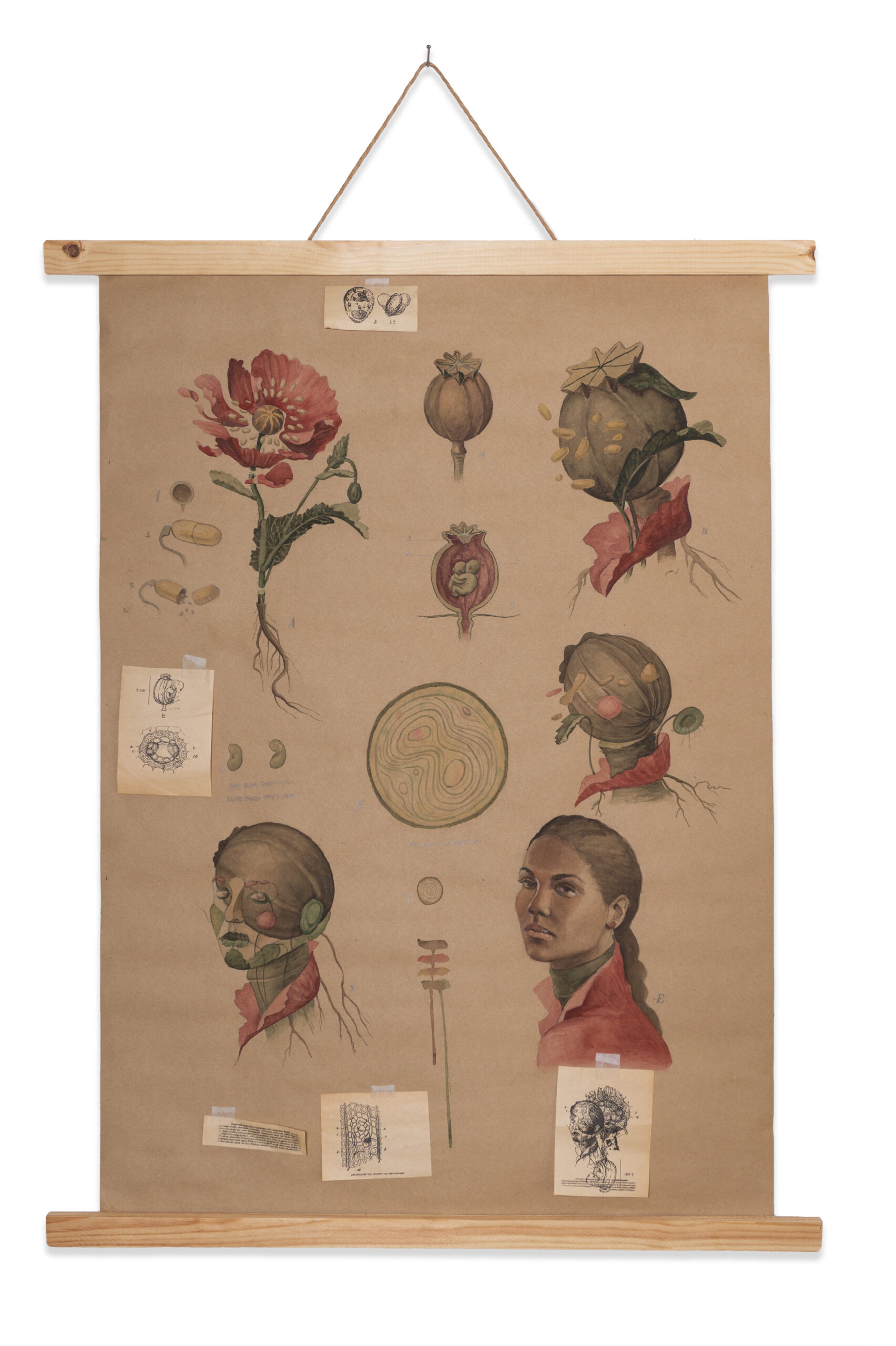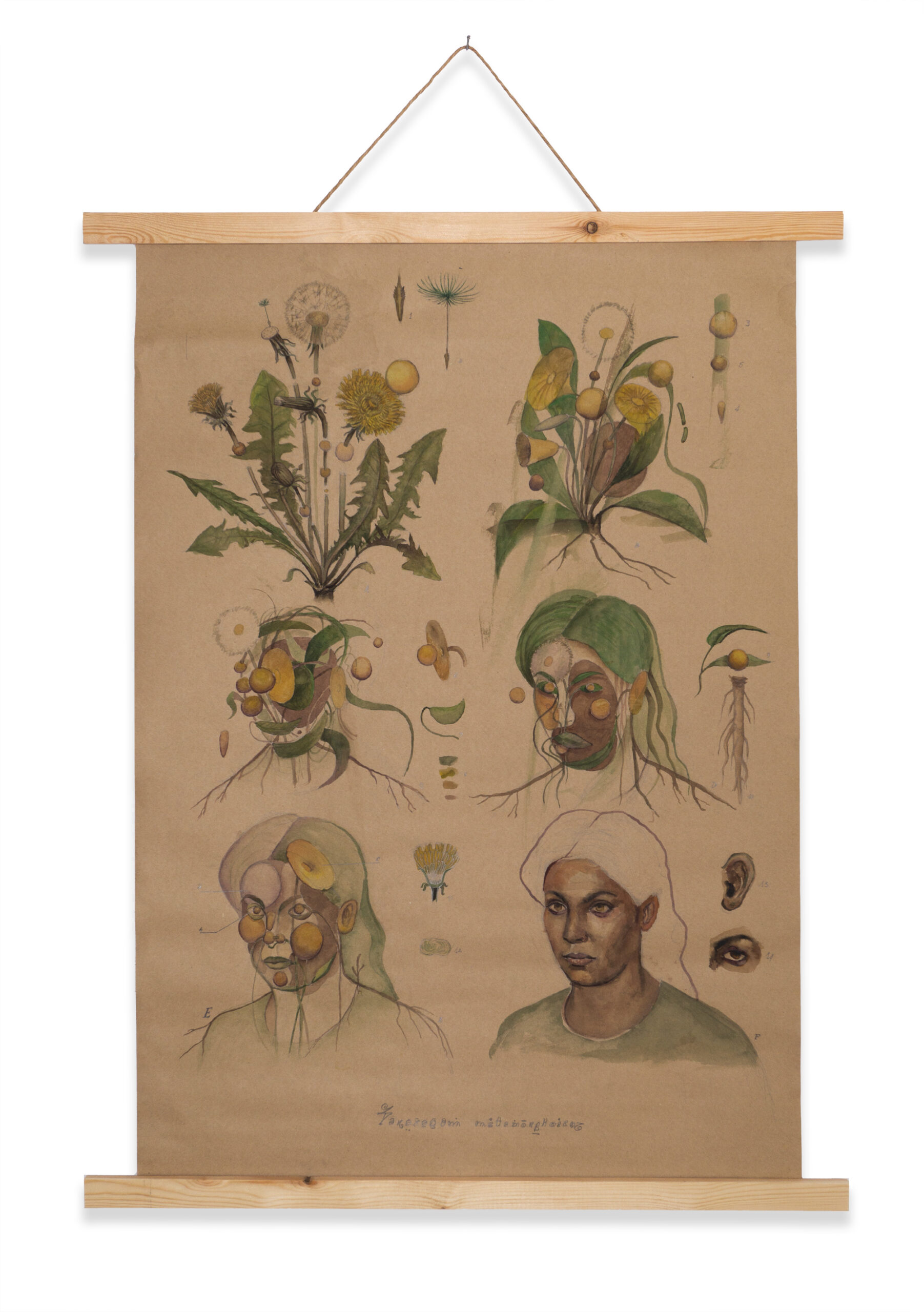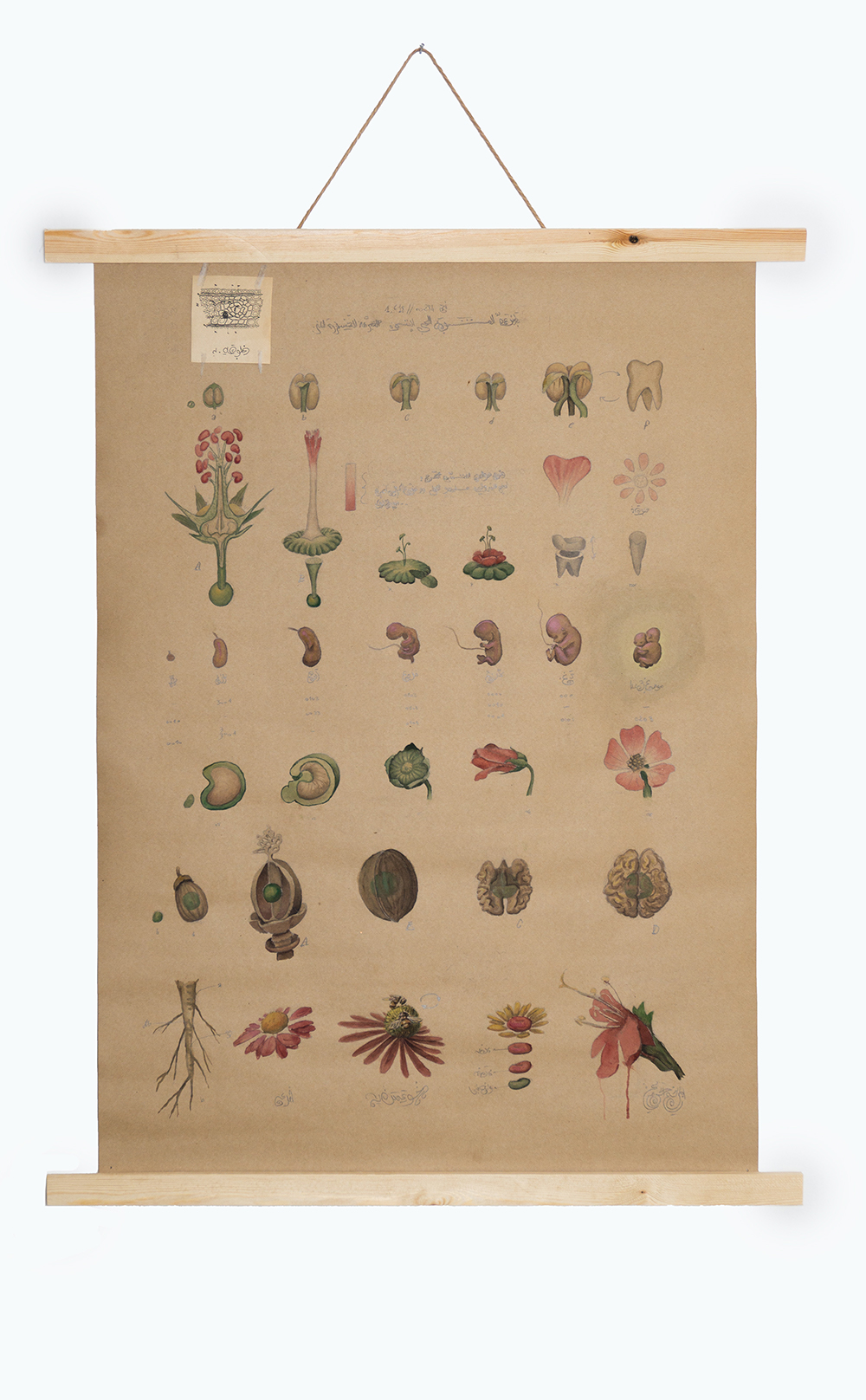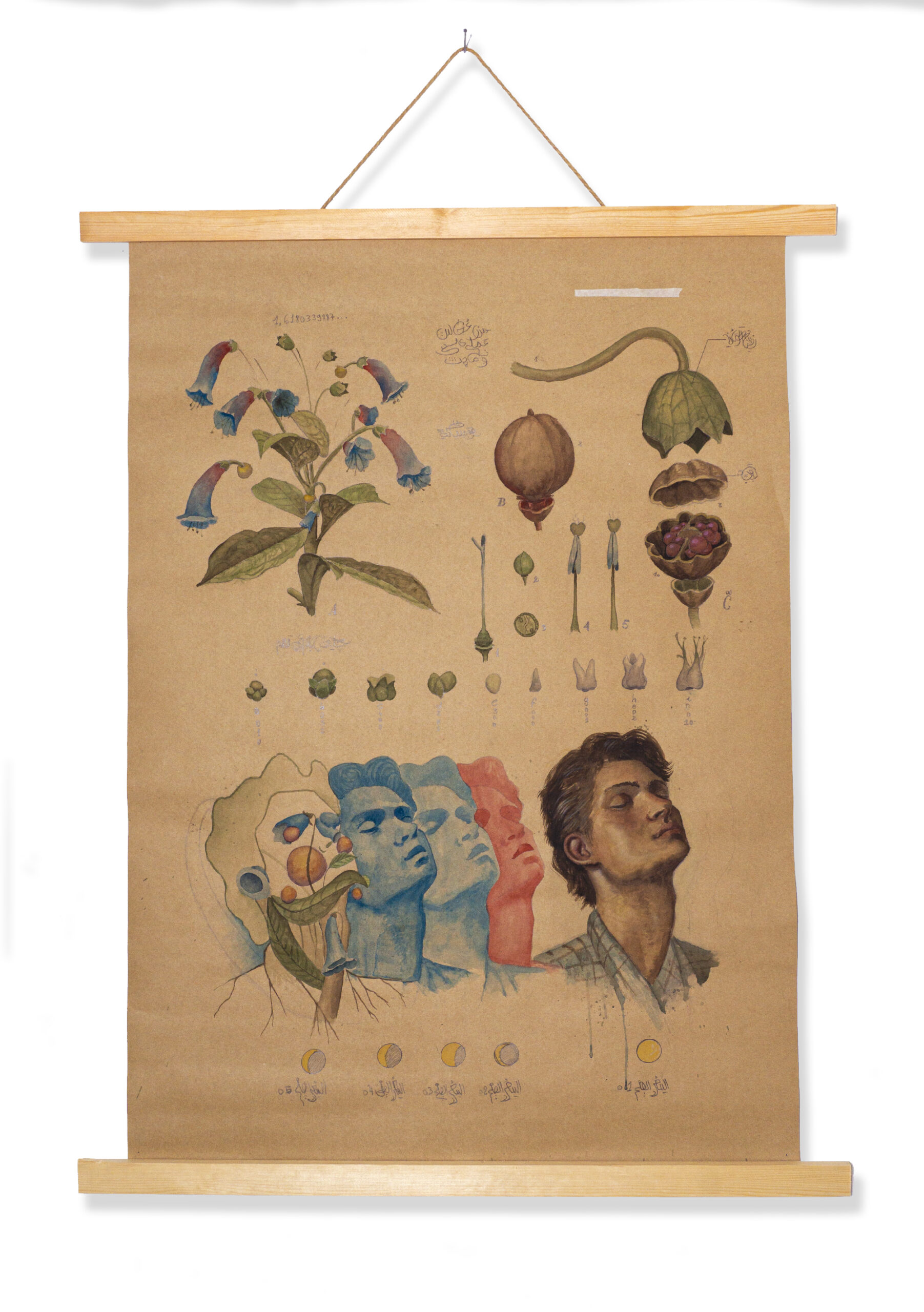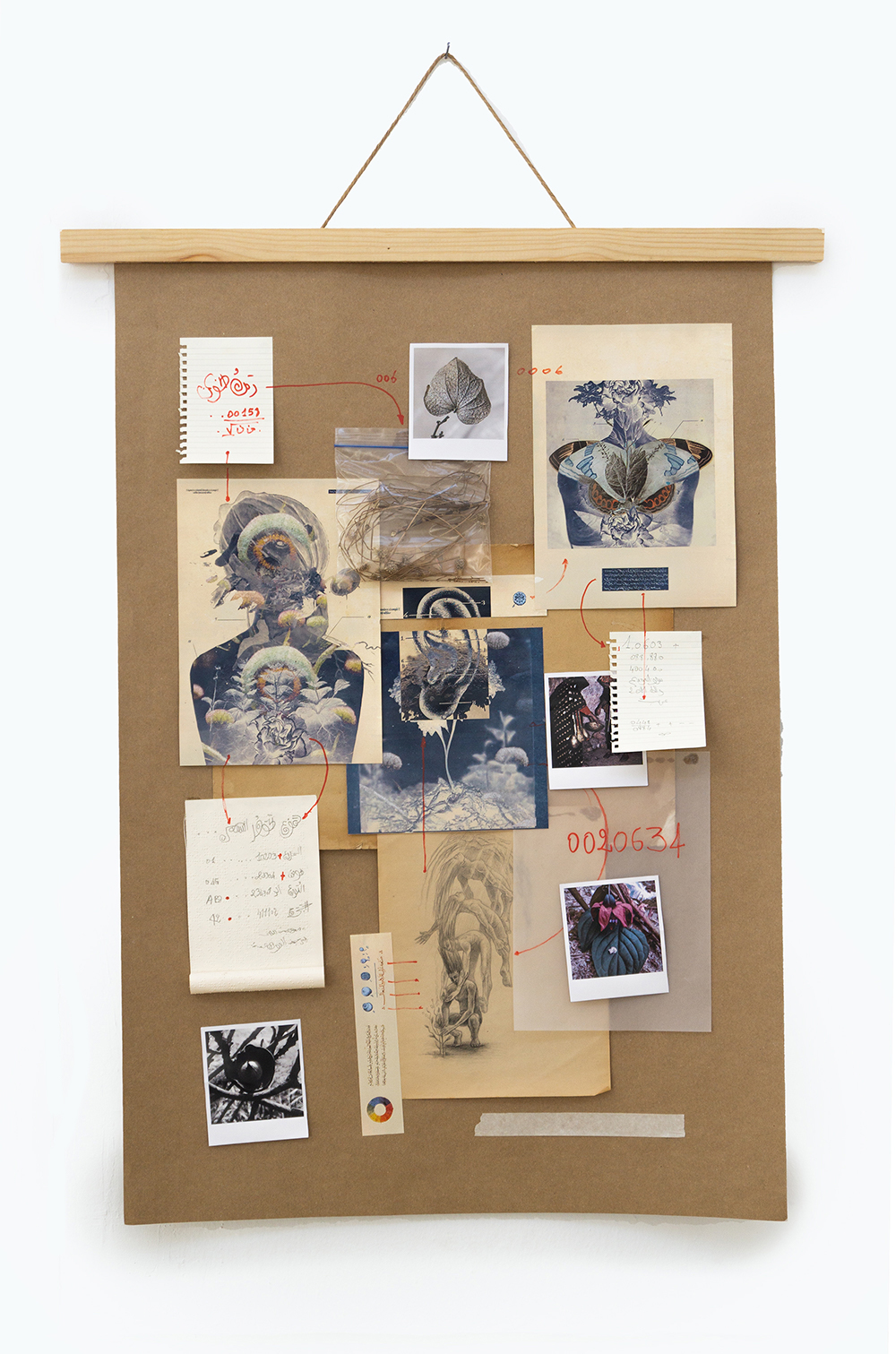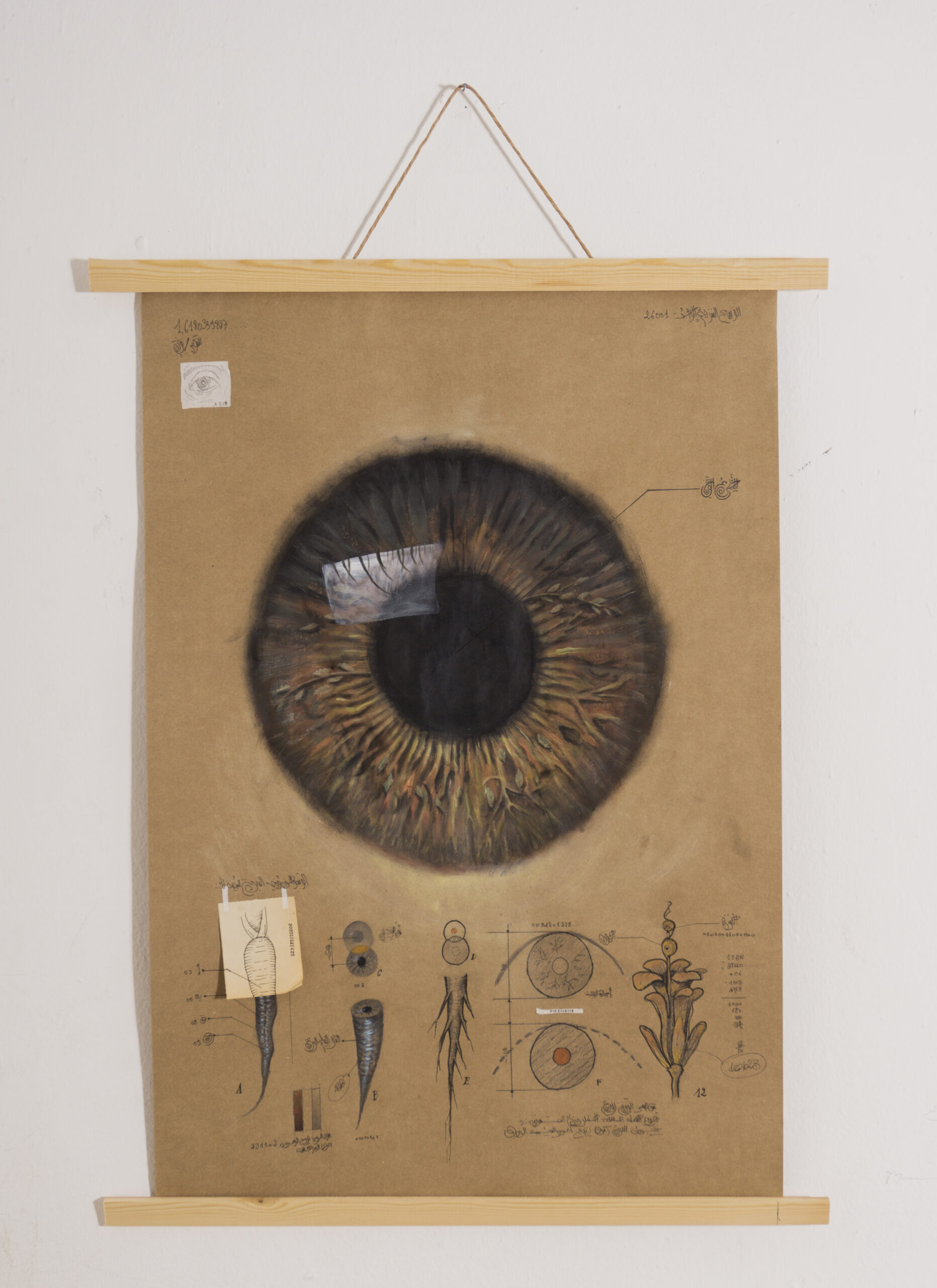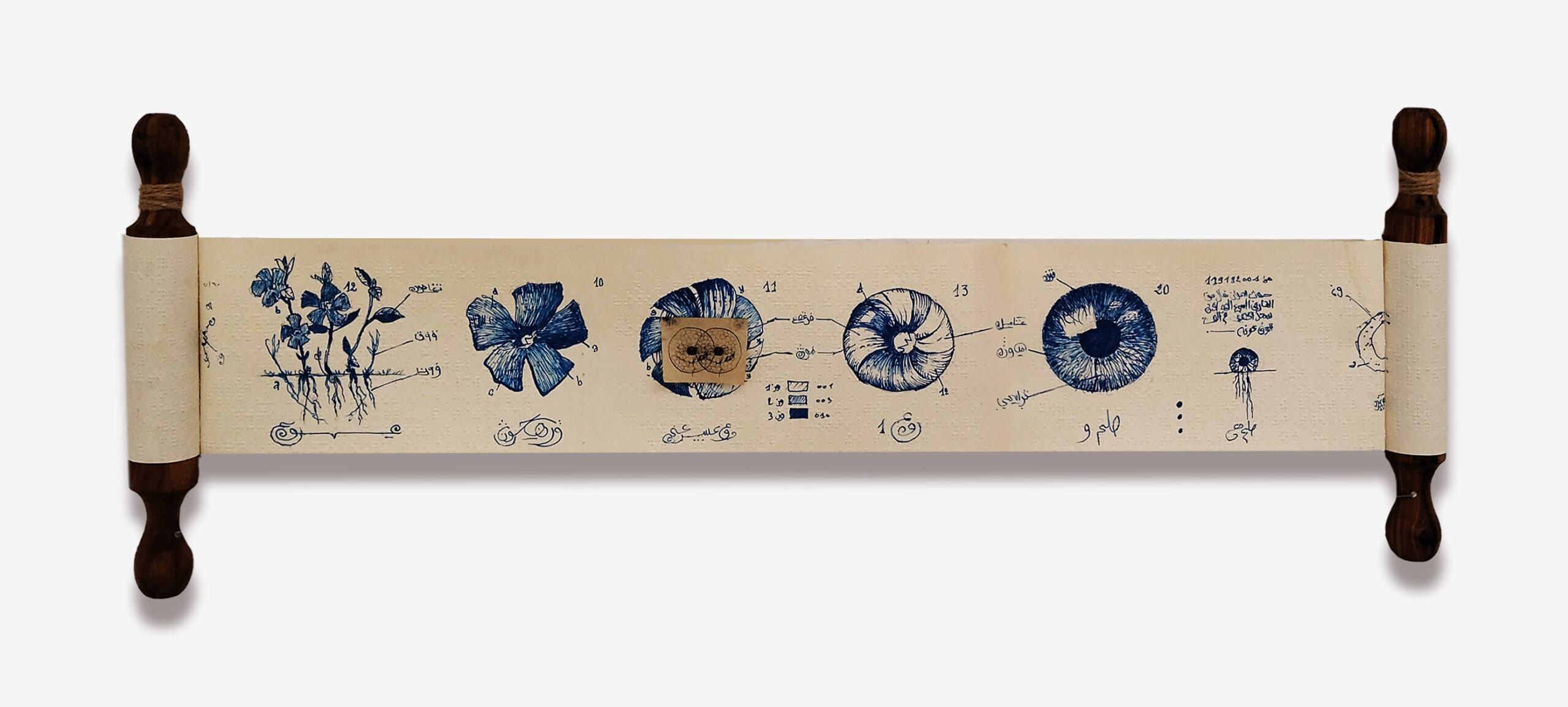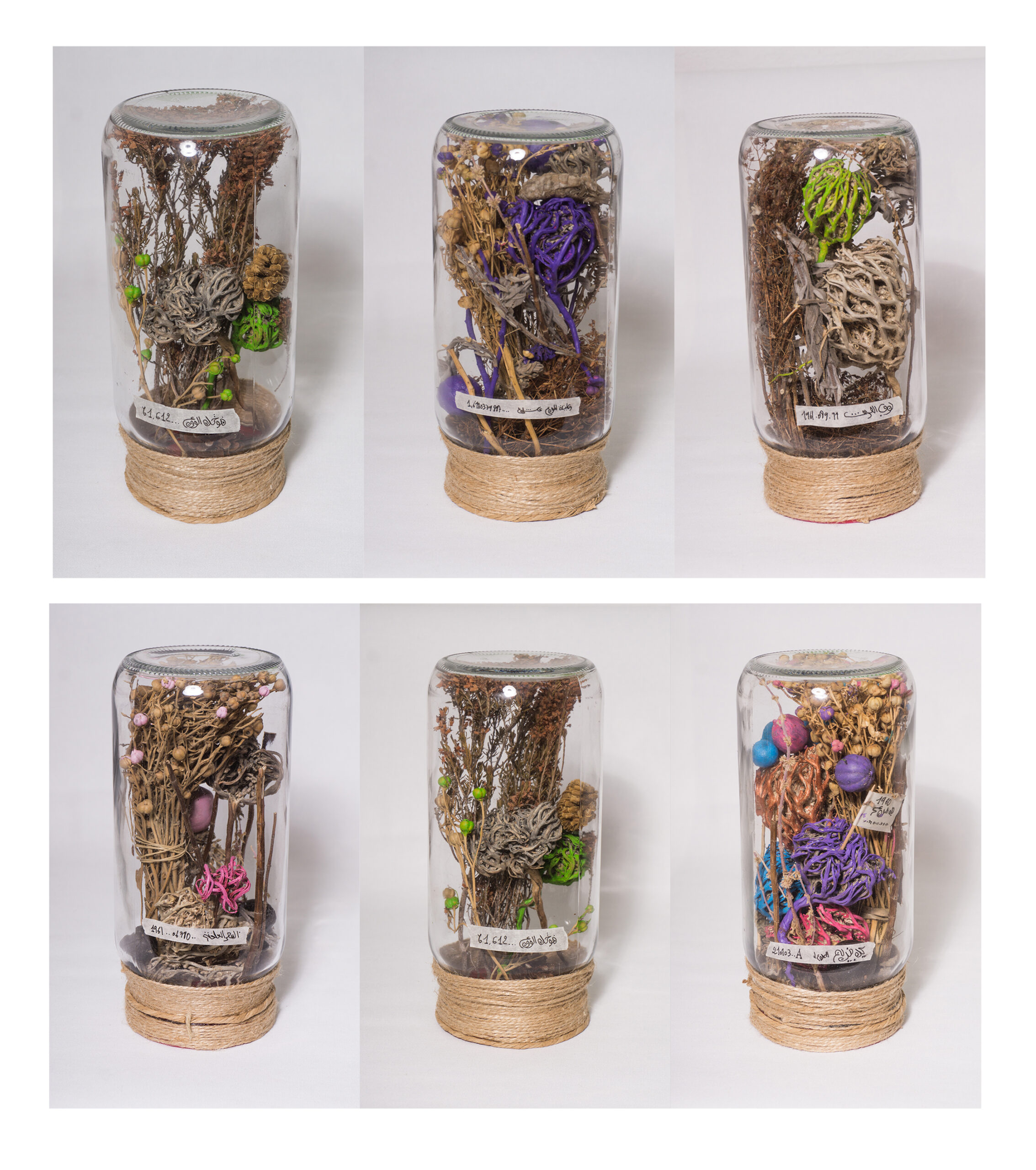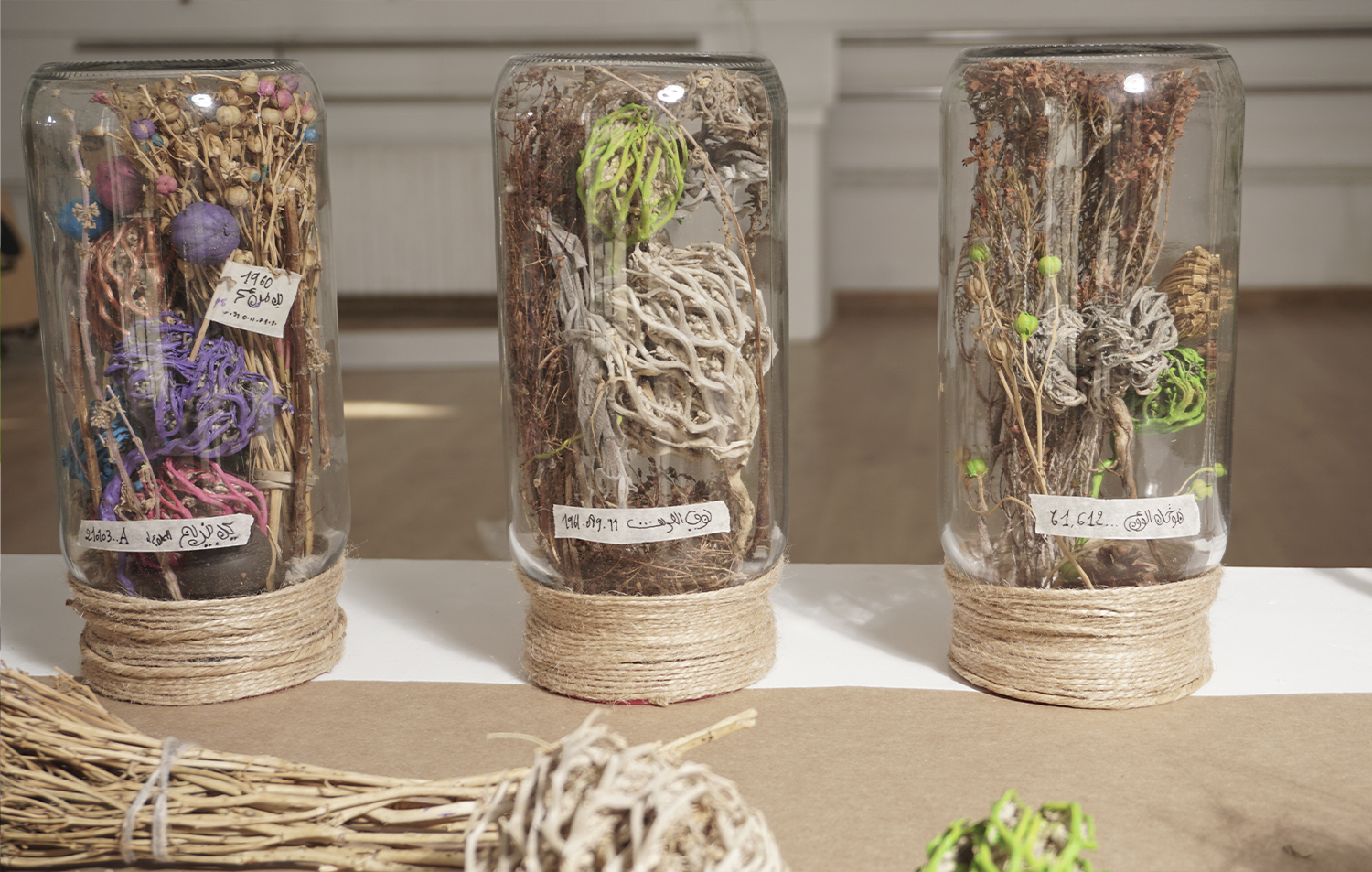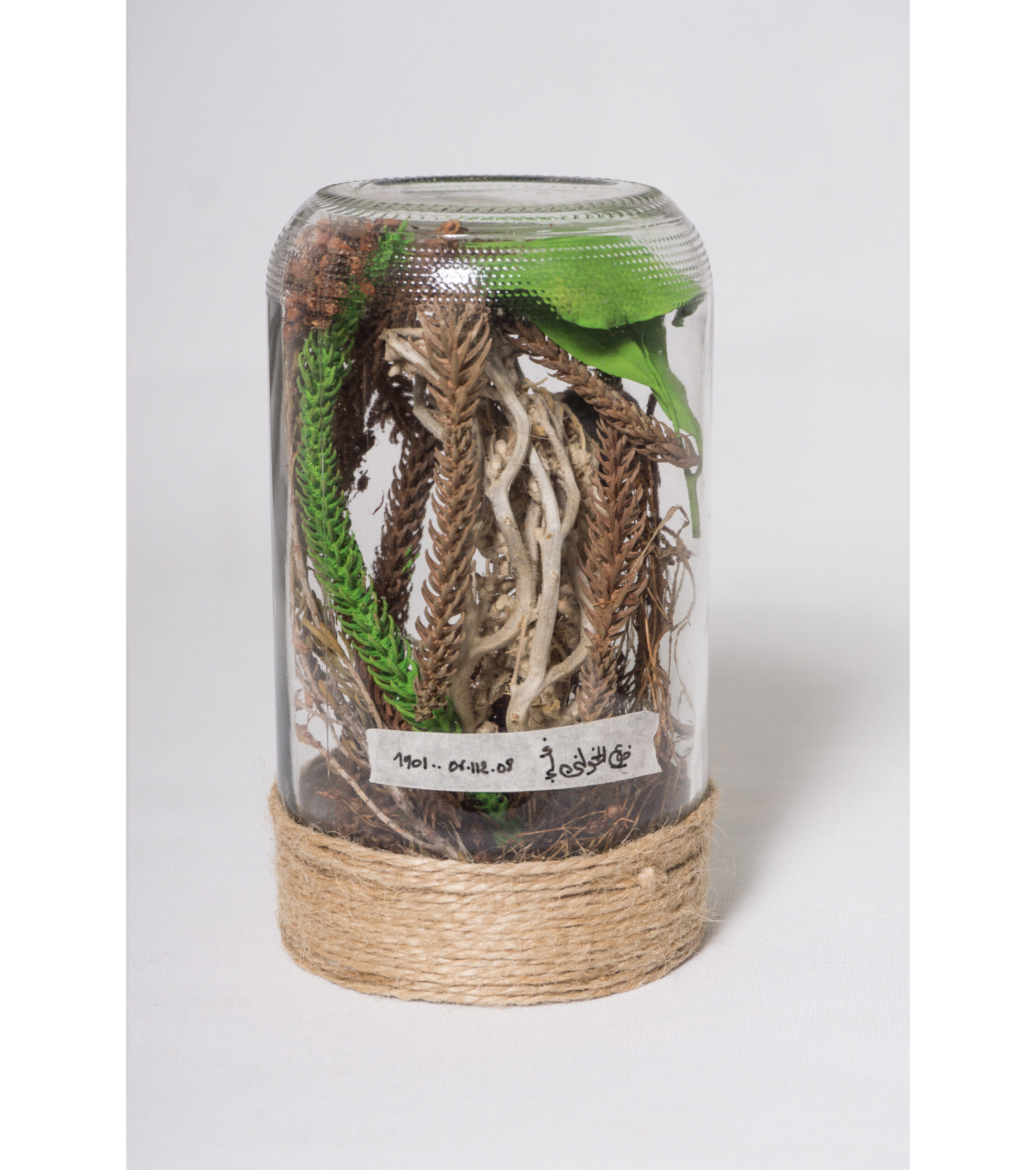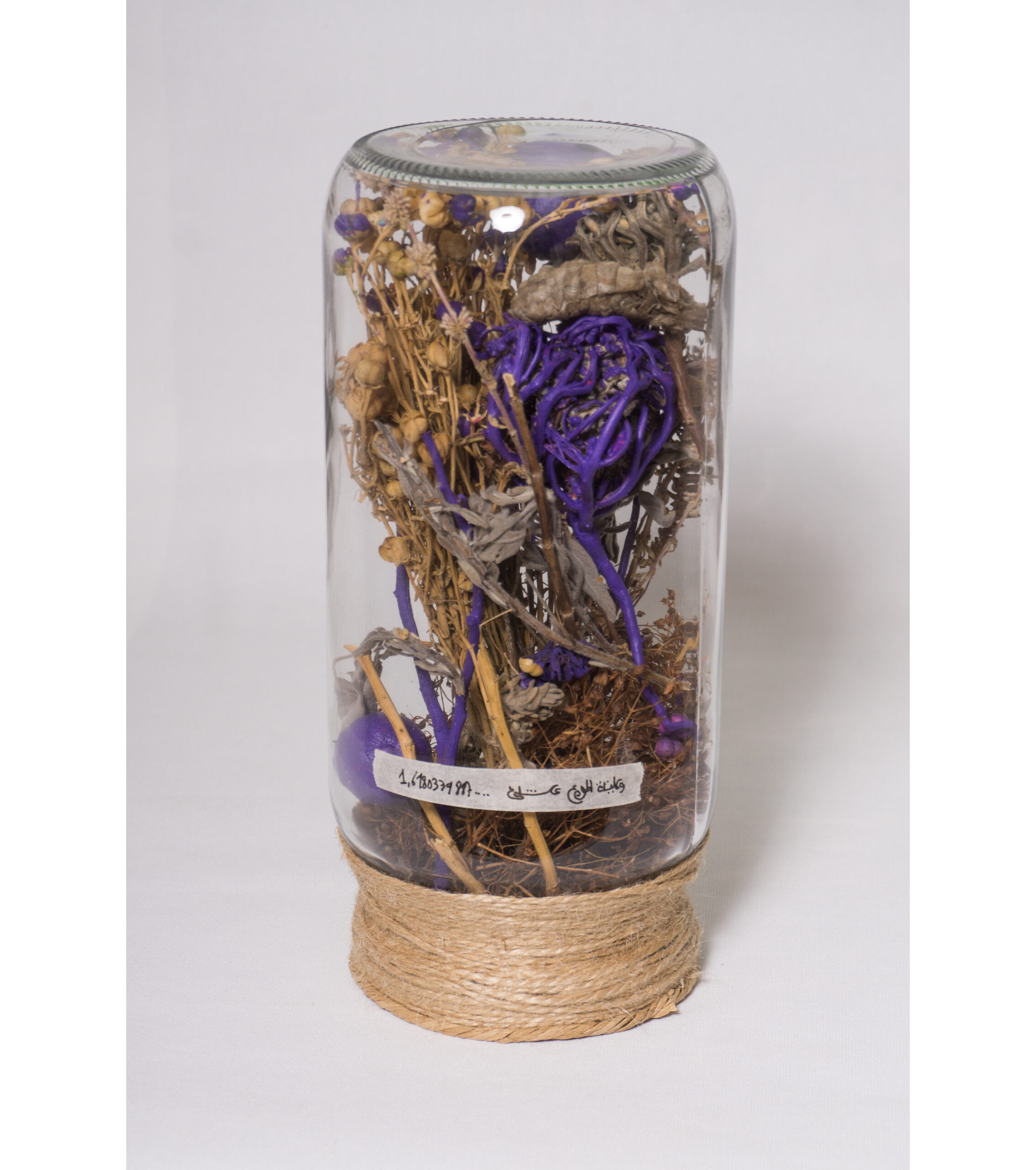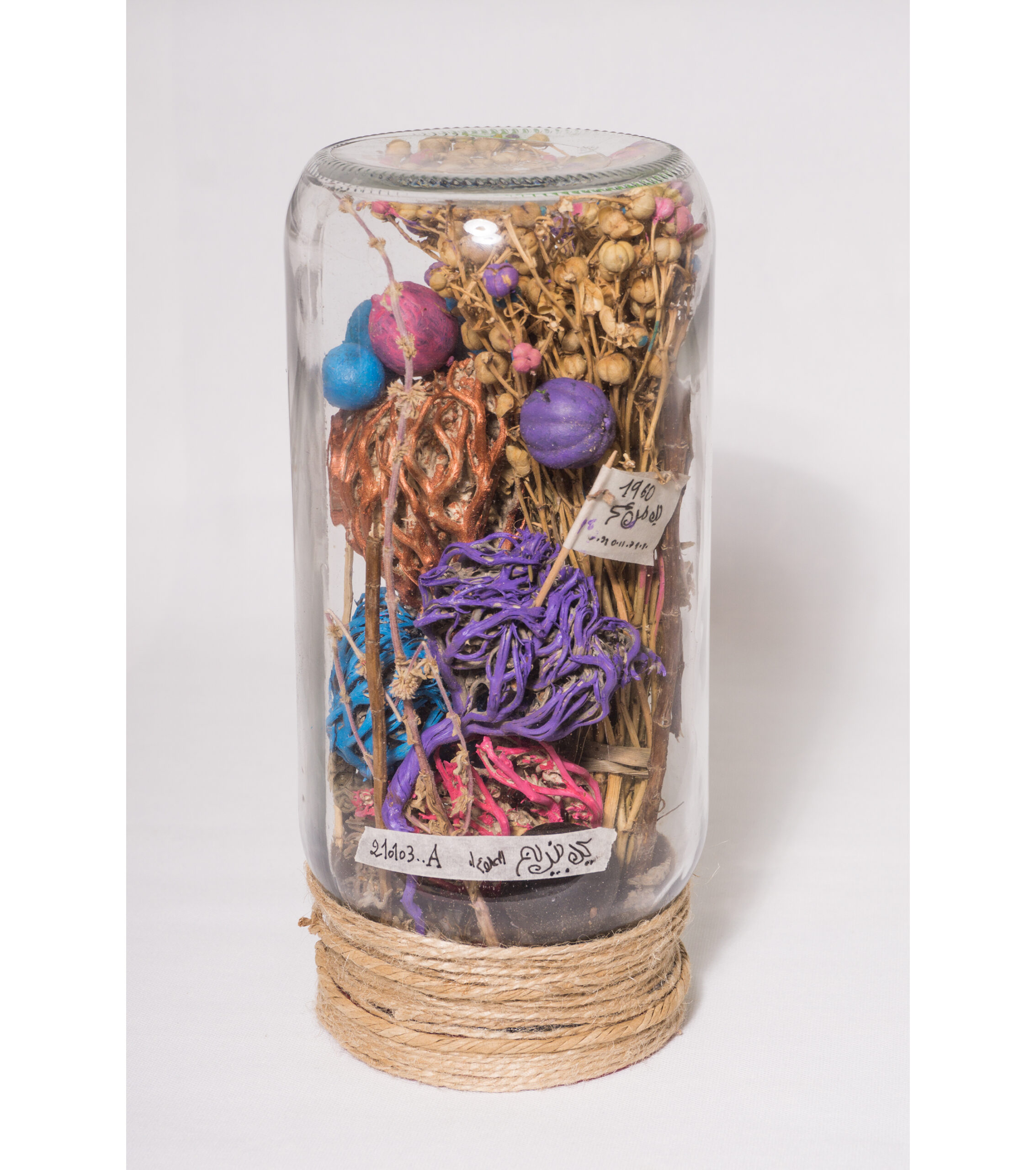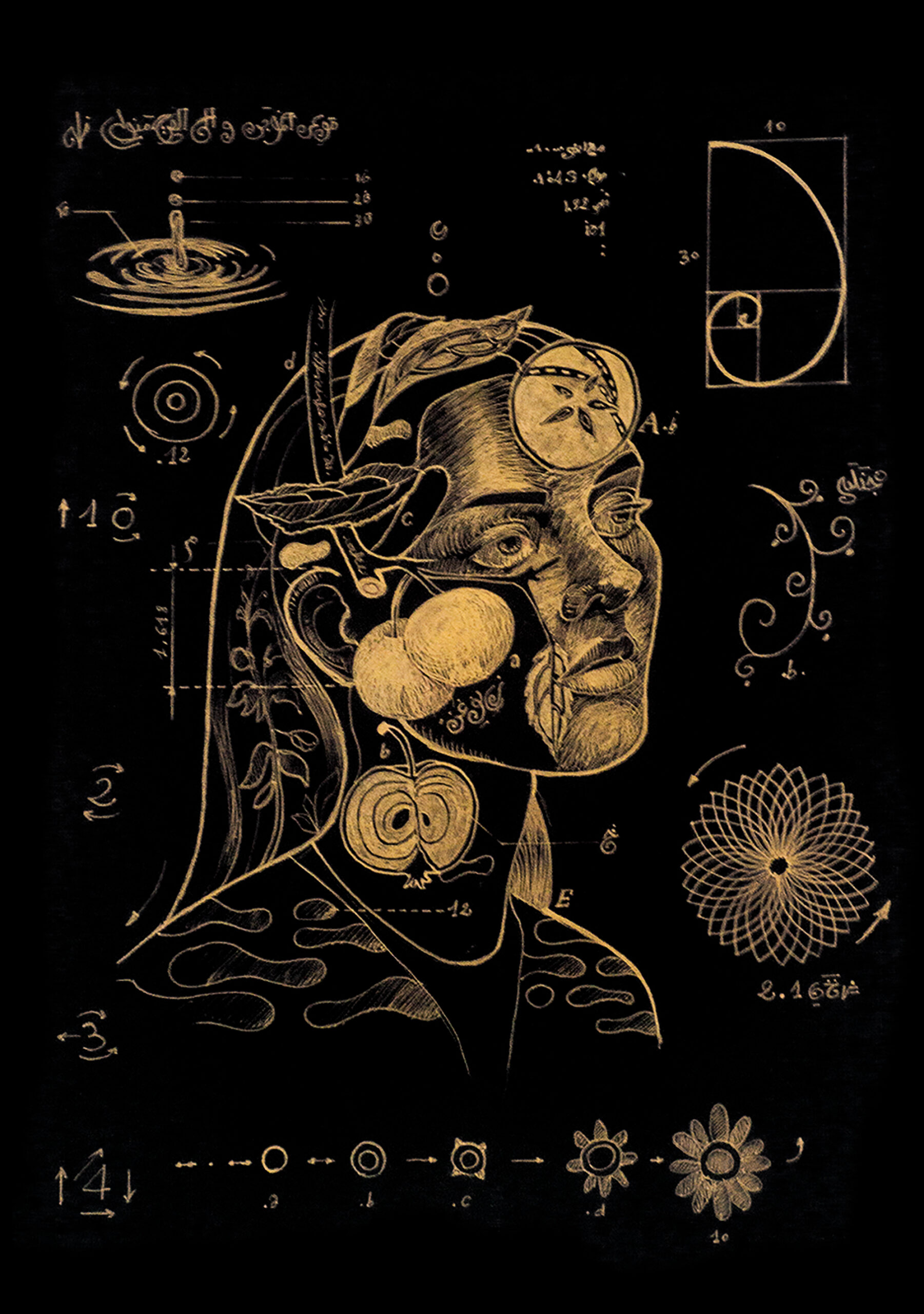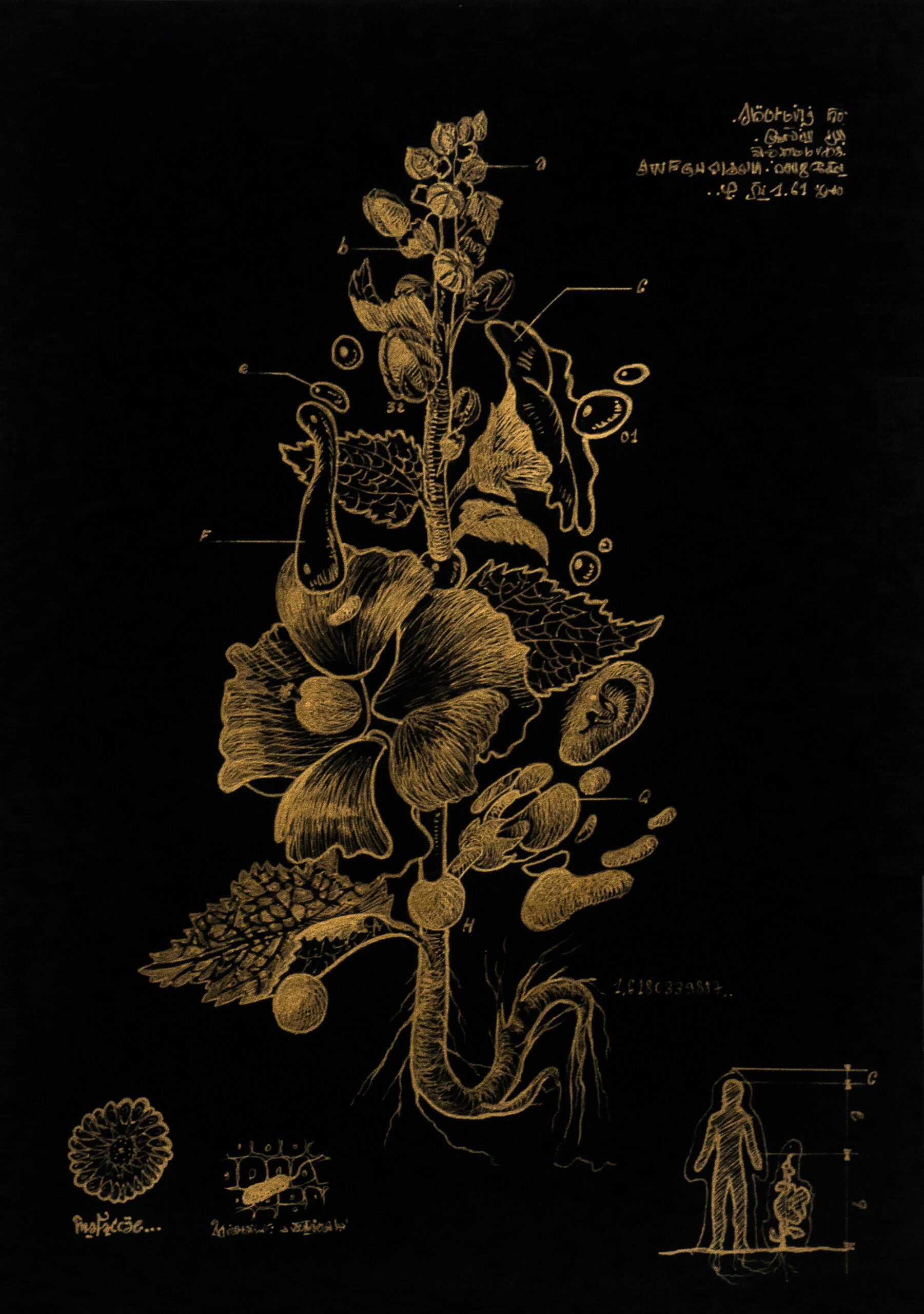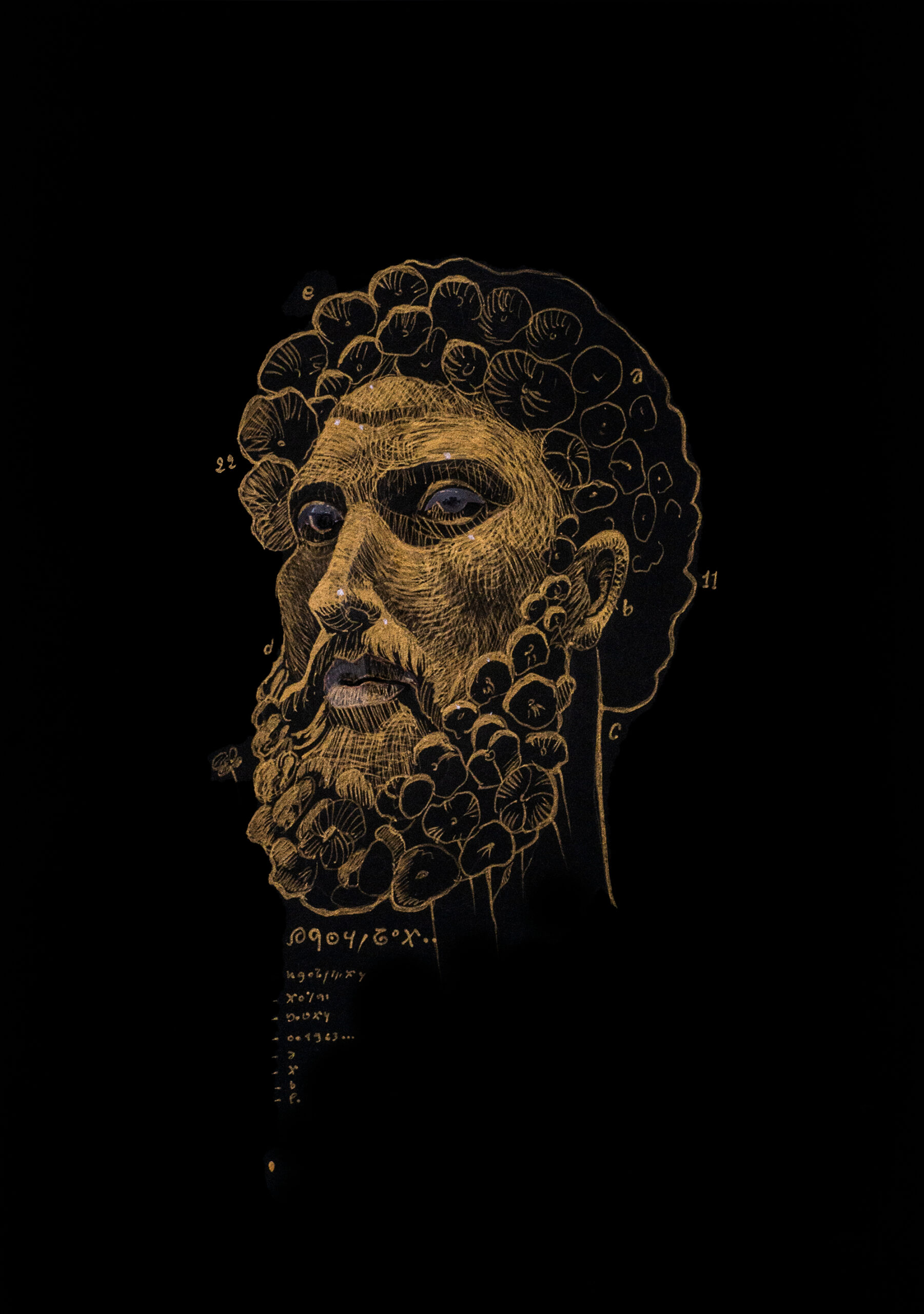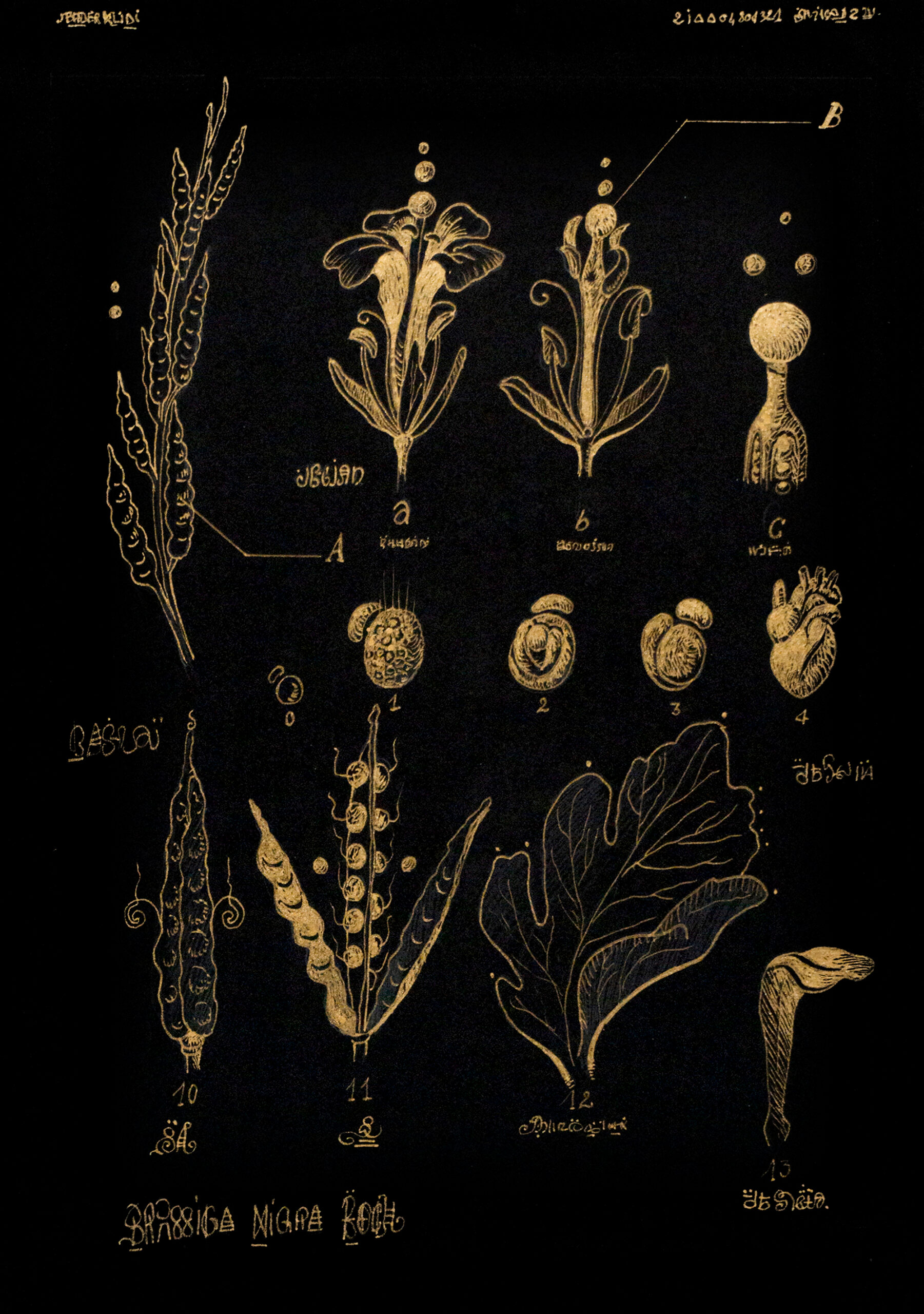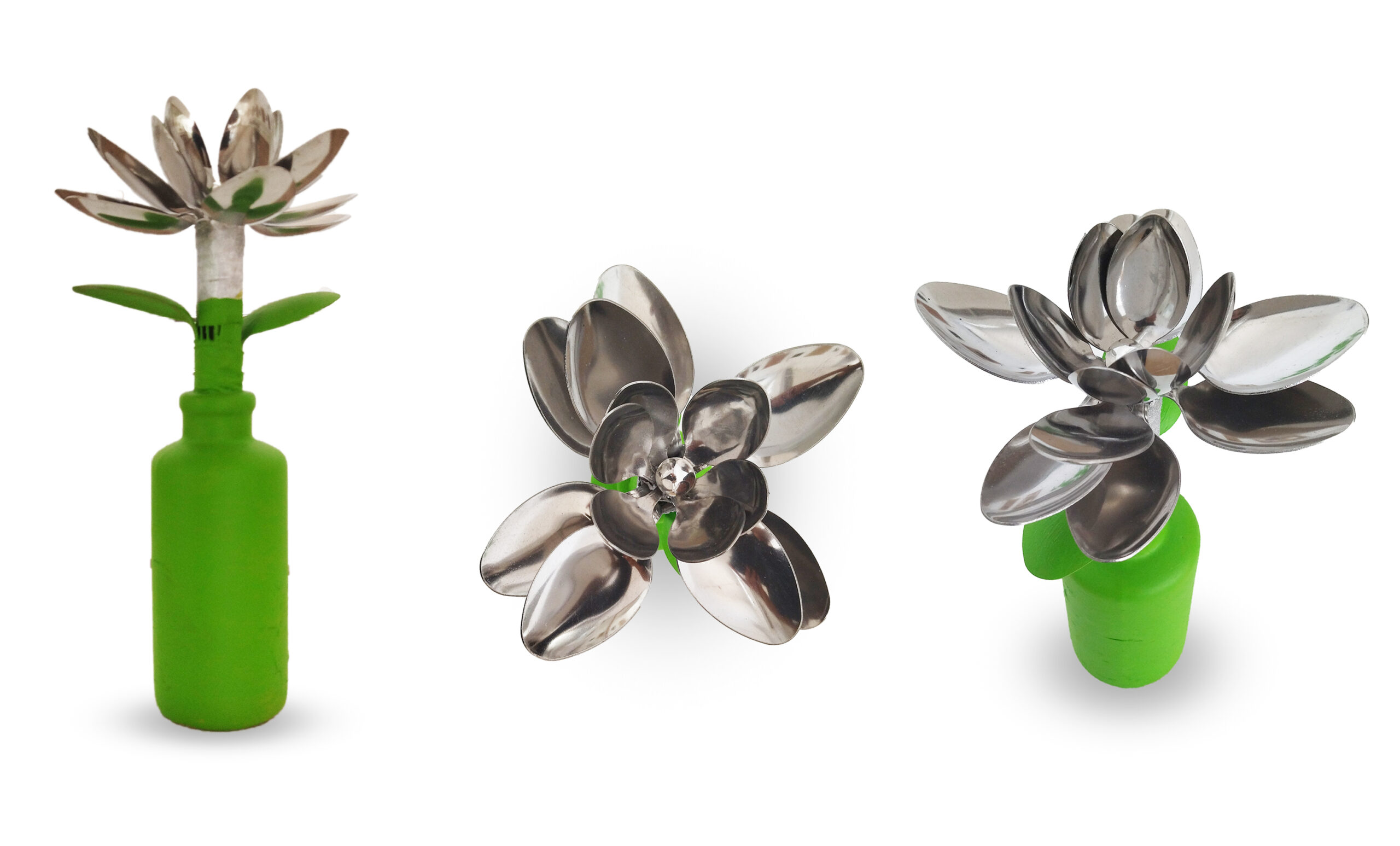Project description
“IMago” embodies my fascination with the idea of metamorphosis, transition, and transformation. The title refers both to “imago” (the final stage of insect metamorphosis) and to Magon/Mago the Carthaginian, a significant historical figure who wrote a 28-volume encyclopedia on agriculture in Carthage (now lost to history).
This project blends experimental and traditional artistic techniques: paintings, drawings, and installations, to explore the profound relationship between humans and the plant world. Rather than focusing solely on agriculture, the project delves into the spiritual, scientific, and artistic dimensions of this connection.
Centered on medicinal plants and inspired by the adage “we are what we eat,” the project often features botanical-human metamorphoses, where scientific illustration merges with artistic vision: seeds become newborns, and kitchen tools are reimagined as sculptural elements and plants transforms into a human portrait.
The old idea “we are what we eat” is the original axis that gave birth to the concept of IMago.
The ancient conceptions of a direct relationship between what we consume and what these elements make of us form a fundamental structure for the reflection at the heart of this project.
In fact, when we eat an apple, the apple disappears and “transforms literally into us”; only the essence of the fruit remains, which is consequently integrated into our body. This occurs not only on an organic level, but also on a level that goes beyond the material, reaching another dimension altogether.
Indeed, this project mainly addresses the idea of consumption in our modern society. However, it offers a multidimensional territory for reflection.
In 400 BC, Hippocrates said, “Let your food be your only medicine!” 2,500 years later, numerous studies confirm that diet accounts for 80% of our health.
Not to mention GMOs (and pesticides) imposed by large biotechnology companies, which in recent years have developed a new concept using mutagenesis techniques.
IMago is not a project about agriculture, but rather, primarily and fundamentally, about the relationship between humans and the plant world, on every level. It questions our responsibility towards our bodies first than to the land and our responsibilities to the environment.
The works are numbered, signed, and captioned, with a fictional script that sometimes recalls Arabic writing but also Latin, evoking a forgotten past and lost knowledge, yet ready to be deciphered. Nevertheless, there are recognizable numbers and letters to maintain a certain readability and direct understanding.
Chimerical illustrations blend medicinal plants and portraits. Pseudo-scientific illustrations are written in an unknown language. Botanical drawings are made with gold acrylic pens on black paper…
Through my work, I seek to rekindle a sense of spirituality, inviting reflection on how the unseen, the intuitive, and the sacred continue to shape our experience of reality. By exploring the interplay between our physical bodies and our spiritual dimension, I aim to question not only what we know, but how we come to know it, and to rediscover the profound connections that bind us to ourselves, to each other, and to the living world around us.
